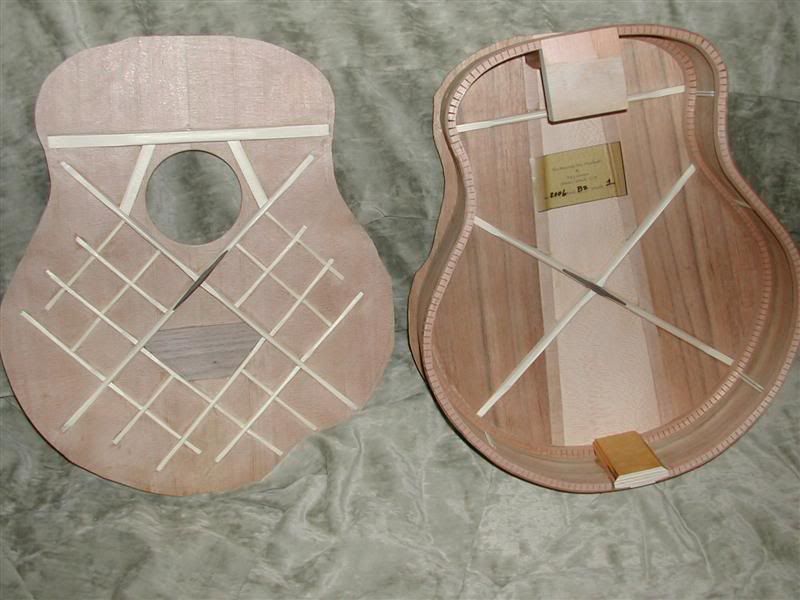Guest wrote: I have had similar thoughts with regard to the factors dictating a successful design. My opinion is that you should design for maximum deflection (measured at the bridge) at minimum stress. I would differ slightly from your design intent in that I would try to get a lot of deflection around the sound hole as well. The operating principle I have in my head is that as the top of the soundboard is pulled up by the strings, the area around the soundhole should be deflected down slightly...effectively hinging around the waist area. I would try to maximize deflection at the bridge...AND at the soundhole (although the soundhole is moving in the opposite direction).
....
Parser
Parser,
I appreciate your thoughts. When I modeled the deflection I used the string load pulling on the bridge, not downward force on the top.Here's some things I found through the modeling and measurement using indicators.
Top deflection takes place behind the bridge and in front of it with the hinge point being the top of the saddle, little movement at the bridge itself next to the saddle, think of the saddle as a lever arm anchored to the top. Makes sense if you think about it as each area is moving in opposite direction as you pointed out with the saddle as the dividing point. You can verify this with a dial indicator and any guitar. The largest deflection in my model happens between the bridge and the tail block, and spread out over a very large portion of that, a much larger area than on a standard X braced guitar.
I'm concerned about the sound hole area because when you take the neck into consideration the guitar wants to fold in half and the waist/sound hole is the weak spot. This is why we see so many old guitars that are caved in there. Better bracing to the neck block would solve a lot of this and is part of my next step and I will reduce or change the transverse brace then.
I should note that this guitar has slightly more deflection around the sound hole than one of my standard X braced steel string.
So in short the whole top doesn't pull up when strings are tensioned, part of it does and part of it goes the opposite direction, the saddle stays basically in the same spot. The neck angle changes however under the string load as the tension tries to fold the guitar in half, thus raising the string action giving us an illusion of the top pulling up.
There, I just opened a whole can of worms for people to disagree with me, or not 
I hope this makes sense and keep thinking about it!
Thanks
|
![Thumbs Up [:Y:]](./images/smilies/smiley20.gif) . I will be watching and listening closely to what you figure out. I am sure it will help me a lot.
. I will be watching and listening closely to what you figure out. I am sure it will help me a lot.

![Uncle [uncle]](./images/smilies/surrenderflagqv6.gif)